#quantum computing and ai
Explore tagged Tumblr posts
Text
How Quantum Computing Will Redefine AI and Machine Learning
Introducing AI, machine learning, and quantum computing into the mix has already begun to transform the face of technology to greater heights. With time, the effects of quantum computing will revolutionize AI and other areas of machine learning beyond our current comprehension. But what is quantum computing, and how will it change the future of artificial intelligence and machine learning?
Let us take you straight into this wonderful crossroads.
Understanding Quantum Computing and AI
Quantum computation is a revolutionary computing system that utilizes the concept of quantum mechanics to solve problems faster than the best traditional methods available to computers. While classical computing uses binary bits, 0 or 1, Quantum computing uses quantum bits or qubits that exist in more than one state. The capacity of quantum computers to simultaneously consider numerous calculations or datasets is called superposition and it is pivotal for all modern AI and machine learning algorithms.
At Guruface, our mission is to make advanced learning accessible to all, including the latest breakthroughs in technology like quantum AI. By exploring courses on quantum computing and AI, you can gain insights into how these technologies are shaping the future.
How Quantum Computing Impacts Machine Learning
One of AI’s categories is machine learning, which involves training a program to identify patterns and algorithms to make accurate predictions using data input. In contrast, current common machine learning model paradigms require intense computation for processing big data, especially with higher dimensionality. That is where quantum machine learning comes into the picture.
Key Benefits of Quantum Computing in Machine Learning
Accelerated Data Processing
With quantum computing, one can solve problems at a speed that would be impossible for any classical computer. This acceleration is significant when it comes to applications that need real-time analysis, be it an autonomous car, or a medical decision-supporting system, where AI and machine learning models can adapt to new information.
Enhanced Pattern Recognition

Quantum algorithms are built to look for a pattern in a set of data, which is critical to AI and machine learning algorithms such as image or voice recognition and recommendation.
Optimization and Problem Solving
Business optimization problems are well-solved by quantum computers and any problem that AI models would solve better with optimized solution—logistics, finance, prediction and analysis—are good candidates for quantum computing.
Deep Learning Advancements
Taking the Deep learning to the next level, quantum computing might help machine learning immensely. Quantum networks when evolving will allow the training of highly sophisticated models which require considerably lower computational power than at present.
Applications of Quantum Computing in AI and Machine Learning
Drug Discovery and Healthcare
The adoption of quantum computing is seen as having the ability to transform drug discovery through simulation of quantum structures. The quantum simulations of these compounds can be analyzed further by AI and machine learning algorithms to reveal new drug compounds faster and faster, bringing new treatments to the market.
Financial Modeling and Risk Analysis

In finance, quantum AI may help to make a significantly better prediction of risks. It enhances the brevity of performing historical computations and market trends with high efficiency in optimizing machine learning with intelligent computing in stock movements and risks.
Climate Modeling and Environmental Science
In finance, quantum AI may help to make a significantly better prediction of risks. It enhances the brevity of performing historical computations and market trends with high efficiency in optimizing machine learning with intelligent computing in stock movements and risks.
The Future of AI and Quantum Technology
AI technology depends on quantum computing as its next major frontier. With prosaic quantum-inspired algorithms, AI models will also adopt quantum enhanced algorithms for faster and improved analysis of big data opening new frontiers. At Guruface, we know the significance of updating ourselves with the latest trends in technology, such as quantum AI and machine learning. Through studying with us you will be prepared for changes in this fast-growing area by developing the knowledge and skills for it.
Why Now is the Time to Learn Machine Learning and Quantum Computing

Enterprises are rapidly finding a need for skills in artificial intelligence and machine learning due to massive enhancements in quantum computing. As for narrowing down the machine learning algorithms, developing new applications in AI and quantum technologies, the opportunity is limitless.
It is useful to learn Machine Learning and quantum computing whether you want to become a data scientist or you are already working as an AI developer. We have a selection of online courses on Guruface to help you get a better understanding of the jobs within the quantum technology and AI market guidance as well as the necessary skills to succeed in this industry of the future.
Conclusion
The combination of quantum computing and of artificial Intelligence will revolutionize industries and generate new business models. The technology in the field of quantum is advancing and that is good news for AI and machine learning because their advancement will increase their value. Get yourself in Guruface to read more on how quantum computing is going to revolutionize the advances in artificial intelligence.
0 notes
Text
Quantum AI: How Quantum Computing Will Reshape the Future of Artificial Intelligence
Artificial intelligence has taken the world by storm, revolutionizing everything from how we shop to how we drive, analyze data, and even interact with machines. But the AI we know today still runs on classical computers—machines that process information one bit at a time, constrained by traditional limitations in speed, energy, and capacity. That’s where quantum computing steps in, not just as…
#future of artificial intelligence#Quantum AI series#quantum computing and AI#quantum machine learning
0 notes
Text
Technomancy: The Fusion Of Magick And Technology

Technomancy is a modern magickal practice that blends traditional occultism with technology, treating digital and electronic tools as conduits for energy, intent, and manifestation. It views computers, networks, and even AI as extensions of magickal workings, enabling practitioners to weave spells, conduct divination, and manipulate digital reality through intention and programming.
Core Principles of Technomancy
• Energy in Technology – Just as crystals and herbs carry energy, so do electronic devices, circuits, and digital spaces.
• Code as Sigils – Programming languages can function as modern sigils, embedding intent into digital systems.
• Information as Magick – Data, algorithms, and network manipulation serve as powerful tools for shaping reality.
• Cyber-Spiritual Connection – The internet can act as an astral realm, a collective unconscious where digital entities, egregores, and thought-forms exist.
Technomantic Tools & Practices
Here are some methods commonly utilized in technomancy. Keep in mind, however, that like the internet itself, technomancy is full of untapped potential and mystery. Take the time to really explore the possibilities.
Digital Sigil Crafting
• Instead of drawing sigils on paper, create them using design software or ASCII art.
• Hide them in code, encrypt them in images, or upload them onto decentralized networks for long-term energy storage.
• Activate them by sharing online, embedding them in file metadata, or charging them with intention.
Algorithmic Spellcasting
• Use hashtags and search engine manipulation to spread energy and intent.
• Program bots or scripts that perform repetitive, symbolic tasks in alignment with your goals.
• Employ AI as a magickal assistant to generate sigils, divine meaning, or create thought-forms.

Digital Divination
• Utilize random number generators, AI chatbots, or procedural algorithms for prophecy and guidance.
• Perform digital bibliomancy by using search engines, shuffle functions, or Wikipedia’s “random article” feature.
• Use tarot or rune apps, but enhance them with personal energy by consecrating your device.
Technomantic Servitors & Egregores
• Create digital spirits, also called cyber servitors, to automate tasks, offer guidance, or serve as protectors.
• House them in AI chatbots, coded programs, or persistent internet entities like Twitter bots.
• Feed them with interactions, data input, or periodic updates to keep them strong.
The Internet as an Astral Plane
• Consider forums, wikis, and hidden parts of the web as realms where thought-forms and entities reside.
• Use VR and AR to create sacred spaces, temples, or digital altars.
• Engage in online rituals with other practitioners, synchronizing intent across the world.
Video-game Mechanics & Design
• Use in-game spells, rituals, and sigils that reflect real-world magickal practices.
• Implement a lunar cycle or planetary influences that affect gameplay (e.g., stronger spells during a Full Moon).
• Include divination tools like tarot cards, runes, or pendulums that give randomized yet meaningful responses.

Narrative & World-Building
• Create lore based on historical and modern magickal traditions, including witches, covens, and spirits.
• Include moral and ethical decisions related to magic use, reinforcing themes of balance and intent.
• Introduce NPCs or AI-guided entities that act as guides, mentors, or deities.
Virtual Rituals & Online Covens
• Design multiplayer or single-player rituals where players can collaborate in spellcasting.
• Implement altars or digital sacred spaces where users can meditate, leave offerings, or interact with spirits.
• Create augmented reality (AR) or virtual reality (VR) experiences that mimic real-world magickal practices.
Advanced Technomancy
The fusion of technology and magick is inevitable because both are fundamentally about shaping reality through will and intent. As humanity advances, our tools evolve alongside our spiritual practices, creating new ways to harness energy, manifest desires, and interact with unseen forces. Technology expands the reach and power of magick, while magick brings intention and meaning to the rapidly evolving digital landscape. As virtual reality, AI, and quantum computing continue to develop, the boundaries between the mystical and the technological will blur even further, proving that magick is not antiquated—it is adaptive, limitless, and inherently woven into human progress.

Cybersecurity & Warding
• Protect your digital presence as you would your home: use firewalls, encryption, and protective sigils in file metadata.
• Employ mirror spells in code to reflect negative energy or hacking attempts.
• Set up automated alerts as magickal wards, detecting and warning against digital threats.
Quantum & Chaos Magic in Technomancy
• Use quantum randomness (like random.org) in divination for pure chance-based outcomes.
• Implement chaos magick principles by using memes, viral content, or trend manipulation to manifest desired changes.
AI & Machine Learning as Oracles
• Use AI chatbots (eg GPT-based tools) as divination tools, asking for symbolic or metaphorical insights.
• Train AI models on occult texts to create personalized grimoires or channeled knowledge.
• Invoke "digital deities" formed from collective online energies, memes, or data streams.
Ethical Considerations in Technomancy
• Be mindful of digital karma—what you send out into the internet has a way of coming back.
• Respect privacy and ethical hacking principles; manipulation should align with your moral code.
• Use technomancy responsibly, balancing technological integration with real-world spiritual grounding.
As technology evolves, so will technomancy. With AI, VR, and blockchain shaping new realities, magick continues to find expression in digital spaces. Whether you are coding spells, summoning cyber servitors, or using algorithms to divine the future, technomancy offers limitless possibilities for modern witches, occultists, and digital mystics alike.

"Magick is technology we have yet to fully understand—why not merge the two?"
#tech witch#technomancy#technology#magick#chaos magick#witchcraft#witch#witchblr#witch community#spellwork#spellcasting#spells#spell#sigil work#sigil witch#sigil#servitor#egregore#divination#quantum computing#tech#internet#video games#ai#vr#artificial intelligence#virtual reality#eclectic witch#eclectic#pagan
112 notes
·
View notes
Text
Why there's no intelligence in Artificial Intelligence
You can blame it all on Turing. When Alan Turing invented his mathematical theory of computation, what he really tried to do was to construct a mechanical model for the processes actual mathematicians employ when they prove a mathematical theorem. He was greatly influenced by Kurt Gödel and his incompleteness theorems. Gödel developed a method to decode logical mathematical statements as numbers and in that way was able to manipulate these statements algebraically. After Turing managed to construct a model capable of performing any arbitrary computation process (which we now call "A Universal Turing Machine") he became convinced that he discovered the way the human mind works. This conviction quickly infected the scientific community and became so ubiquitous that for many years it was rare to find someone who argued differently, except on religious grounds.
There was a good reason for adopting the hypothesis that the mind is a computation machine. This premise was following the extremely successful paradigm stating that biology is physics (or, to be precise, biology is both physics and chemistry, and chemistry is physics), which reigned supreme over scientific research since the eighteenth century. It was already responsible for the immense progress that completely transformed modern biology, biochemistry, and medicine. Turing seemed to supply a solution, within this theoretical framework, for the last large piece in the puzzle. There was now a purely mechanistic model for the way brain operation yields all the complex repertoire of human (and animal) behavior.
Obviously, not every computation machine is capable of intelligent conscious thought. So, where do we draw the line? For instance, at what point can we say that a program running on a computer understands English? Turing provided a purely behavioristic test: a computation understands a language if by conversing with it we cannot distinguish it from a human.
This is quite a silly test, really. It doesn't provide any clue as to what actually happens within the artificial "mind"; it assumes that the external behavior of an entity completely encapsulates its internal state; it requires "man in the loop" to provide the final ruling; it does not state for how long and on what level should this conversation be held. Such a test may serve as a pragmatic common-sense method to filter out obvious failures, but it brings us not an ounce closer to understanding conscious thinking.
Still, the Turing Test stuck. If anyone tried to question the computational model of the mind, he was then confronted with the unavoidable question: what else can it be? After all, biology is physics, and therefore the brain is just a physical machine. Physics is governed by equations, which are all, in theory, computable (at least approximately, with errors being as small as one wishes). So, short of conjuring supernatural soul that magically produces a conscious mind out of biological matter, there can be no other solution.

Nevertheless, not everyone conformed to the new dogma. There were two tiers of reservations to computational Artificial Intelligence. The first, maintained, for example, by the Philosopher John Searl, didn't object to idea that a computation device may, in principle, emulate any human intellectual capability. However, claimed Searl, a simulation of a conscious mind is not conscious in itself.
To demonstrate this point Searl envisioned a person who doesn't know a single word in Chinese, sitting in a secluded room. He receives Chinese texts from the outside through a small window and is expected to return responses in Chinese. To do that he uses written manuals that contain the AI algorithm which incorporates a comprehensive understanding of the Chinese language. Therefore, a person fluent in Chinese that converses with the "room" shall deduce, based on Turing Test, that it understands the language. However, in fact there's no one there but a man using a printed recipe to convert an input message he doesn't understands to an output message he doesn't understands. So, who in the room understands Chinese?
The next tier of opposition to computationalism was maintained by the renowned physicist and mathematician Roger Penrose, claiming that the mind has capabilities which no computational process can reproduce. Penrose considered a computational process that imitates a human mathematician. It analyses mathematical conjecture of a certain type and tries to deduce the answer to that problem. To arrive at a correct answer the process must employ valid logical inferences. The quality of such computerized mathematician is measured by the scope of problems it can solve.
What Penrose proved is that such a process can never verify in any logically valid way that its own processing procedures represent valid logical deductions. In fact, if it assumes, as part of its knowledge base, that its own operations are necessarily logically valid, then this assumption makes them invalid. In other words, a computational machine cannot be simultaneously logically rigorous and aware of being logically rigorous.
A human mathematician, on the other hand, is aware of his mental processes and can verify for himself that he is making correct deductions. This is actually an essential part of his profession. It follows that, at least with respect to mathematicians, cognitive functions cannot be replicated computationally.
Neither Searl's position nor Penrose's was accepted by the mainstream, mainly because, if not computation, "what else can it be?". Penrose's suggestion that mental processes involve quantum effects was rejected offhandedly, as "trying to explicate one mystery by swapping it with another mystery". And the macroscopic hot, noisy brain seemed a very implausible place to look for quantum phenomena, which typically occur in microscopic, cold and isolated systems.
Fast forward several decades. Finaly, it seemed as though the vision of true Artificial Intelligence technology started bearing fruits. A class of algorithms termed Deep Neural Networks (DNN) achieved, at last, some human-like capabilities. It managed to identify specific objects in pictures and videos, generate photorealistic images, translate voice to text, and support a wide variety of other pattern recognition and generation tasks. Most impressively, it seemed to have mastered natural language and could partake in an advanced discourse. The triumph of computational AI appeared more feasible than ever. Or was it?
During my years as undergraduate and graduate student I sometimes met fellow students who, at first impression, appeared to be far more conversant in the academic courses subject matter than me. They were highly confident and knew a great deal about things that were only briefly discussed in lectures. Therefore, I was vastly surprised when it turned out they were not particularly good students, and that they usually scored worse than me in the exams. It took me some time to realize that these people hadn't really possessed a better understanding of the curricula. They just adopted the correct jargon, employed the right words, so that, to the layperson ears, they had sounded as if they knew what they were talking about.
I was reminded of these charlatans when I encountered natural language AIs such as Chat GPT. At first glance, their conversational abilities seem impressive – fluent, elegant and decisive. Their style is perfect. However, as you delve deeper, you encounter all kinds of weird assertions and even completely bogus statements, uttered with absolute confidence. Whenever their knowledge base is incomplete, they just fill the gap with fictional "facts". And they can't distinguish between different levels of source credibility. They're like Idiot Savants – superficially bright, inherently stupid.
What confuses so many people with regard to AIs is that they seem to pass the (purely behavioristic) Turing Test. But behaviorism is a fundamentally non-scientific viewpoint. At the core, computational AIs are nothing but algorithms that generates a large number of statistical heuristics from enormous data sets.
There is an old anecdote about a classification AI that was supposed to distinguish between friendly and enemy tanks. Although the AI performed well with respect to the database, it failed miserably in field tests. Finely, the developers figured out the source of the problem. Most of the friendly tanks' images in the database were taken during good weather and with fine lighting conditions. The enemy tanks were mostly photographed in cloudy, darker weather. The AI simply learned to identify the environmental condition.
Though this specific anecdote is probably an urban legend, it illustrates the fact that AIs don't really know what they're doing. Therefore, attributing intelligence to Arificial Intelligence algorithms is a misconception. Intelligence is not the application of a complicated recipe to data. Rather, it is a self-critical analysis that generates meaning from input. Moreover, because intelligence requires not only understanding of the data and its internal structure, but also inner-understanding of the thought processes that generate this understanding, as well as an inner-understanding of this inner-understanding (and so forth), it can never be implemented using a finite set of rules. There is something of the infinite in true intelligence and in any type of conscious thought.
But, if not computation, "what else can it be?". The substantial progress made in quantum theory and quantum computation revived the old hypothesis by Penrose that the working of the mind is tightly coupled to the quantum nature of the brain. What had been previously regarded as esoteric and outlandish suddenly became, in light of recent advancements, a relevant option.
During the last thirty years, quantum computation has been transformed from a rather abstract idea made by the physicist Richard Feynman into an operational technology. Several quantum algorithms were shown to have a fundamental advantage over any corresponding classical algorithm. Some tasks that are extremely hard to fulfil through standard computation (for example, factorization of integers to primes) are easy to achieve quantum mechanically. Note that this difference between hard and easy is qualitative rather than quantitative. It's independent of which hardware and how much resources we dedicate to such tasks.
Along with the advancements in quantum computation came a surging realization that quantum theory is still an incomplete description of nature, and that many quantum effects cannot be really resolved form a conventional materialistic viewpoint. This understanding was first formalized by John Stewart Bell in the 1960s and later on expanded by many other physicists. It is now clear that by accepting quantum mechanics, we have to abandon at least some deep-rooted philosophical perceptions. And it became even more conceivable that any comprehensive understanding of the physical world should incorporate a theory of the mind that experiences it. It's only stands to reason that, if the human mind is an essential component of a complete quantum theory, then the quantum is an essential component of the workings of the mind. If that's the case, then it's clear that a classical algorithm, sophisticated as it may be, can never achieve true intelligence. It lacks an essential physical ingredient that is vital for conscious, intelligent thinking. Trying to simulate such thinking computationally is like trying to build a Perpetuum Mobile or chemically transmute lead into gold. You might discover all sorts of useful things along the way, but you would never reach your intended goal. Computational AIs shall never gain true intelligence. In that respect, this technology is a dead end.
#physics#ai#artificial intelligence#Alan Turing#computation#science#quantum physics#mind and body#John Searl#Roger Penrose
20 notes
·
View notes
Note
That ai post, I agree that ai it's an awful thing that should've never gone that far but sometimes you can't literally escape it. I work as a data analyst and at least where I'm from every job related to my field demands now that you have knowledge in a lot of ai softwares.. And like a girl has to eat 😭.
As an academic if you include AI in your funding proposal you WILL get the money. It’s become a similar buzzword to quantum except much more powerful. And AI can be rightfully powerful for niche research related things and tensorflow isn’t ALL bad but things like the widespread used of AI in everyday life scares me. What happens when chatgpt needs to start making money, moves ALL of their software that a bunch of young adults now don’t know how to think without to a ridiculous subscription-based model for like 80$ a month? How much personal data is put in there each day? I just think it’s an absolute disaster waiting to happen, not to mention the AI arms race that’s exploded and everyone’s insistence to put AI into everything including checks and balances to existing systems. I don’t have a good feeling, it really needs to be regulated and quick but all the old people in power don’t actually understand the crisis on their hands and just care about the jingle of the cash in their pockets.
#always feel very lucky to have gone through pre-grad education without ai#if I’d be given the magic essay writing machine at 14 I would’ve just used it#and that’s a WORRY#not to mention the environmental goals being steamrolled#and the fact that it requires so much computing power we DO NOT HAVE#nor ever will bc quantum is not the answer. physicists know this but economists who listened to a podcast once think they know better.#sigh.#asks#non f1#artificial intelligence
12 notes
·
View notes
Text
Quantum Computing 101: What are Qubits?
Curious about quantum computing? Let's break it down!
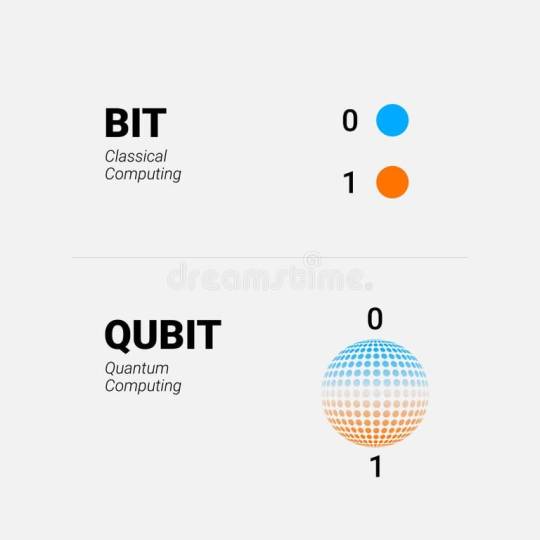
🔍 What’s a Qubit? A qubit is the basic unit of quantum information. Unlike classical bits (0 or 1), qubits can be 0, 1, or both at the same time thanks to a phenomenon called superposition.
✨ Why Is This Cool?
Superposition: Allows qubits to explore many possibilities simultaneously.
Entanglement: Qubits can be linked, so the state of one affects the state of another, no matter the distance.
⚙️ In Action: This means quantum computers can tackle complex problems faster by processing a huge number of possibilities at once!
Follow for more insights on the future of tech! 🚀✨
Instagram: cs_learninghub YT: CS Learning Hub
#quantum computing#quantum#science#physics#computer science#bits#tumblr#aesthetic#studyblr#study#study motivation#qubits#machine learning#artificial intelligence#ai#ml#cs#learn#study blog
21 notes
·
View notes
Text
How to Make - Operate -- Quantum Computers Pt 1
Futuristic Quantum Computing with instructions!

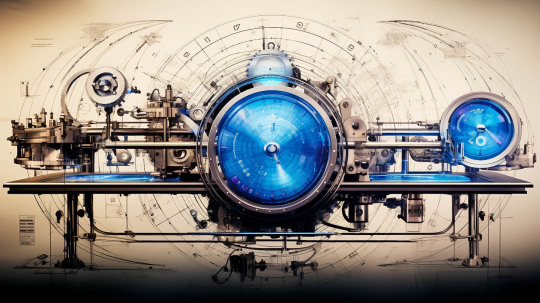

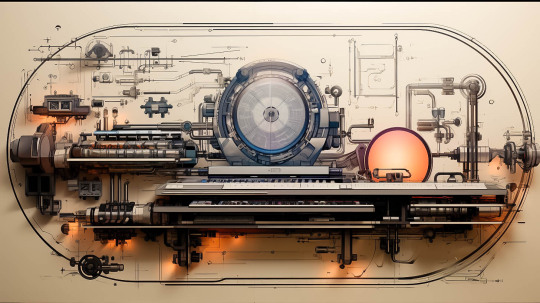
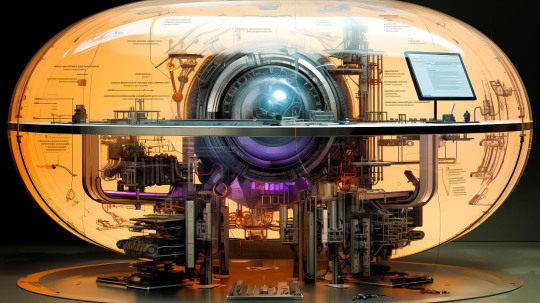




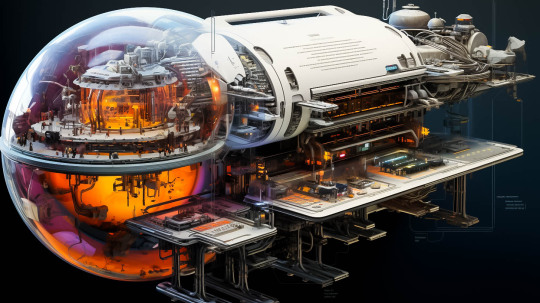
#quantum computing#schematics#blueprints#aiartwork#midjourney#diagrams#diagram#yan61#YAN61#image prompt#computer design#ultimate computer#ai artwork#generative art#futurism#space computer
65 notes
·
View notes
Photo
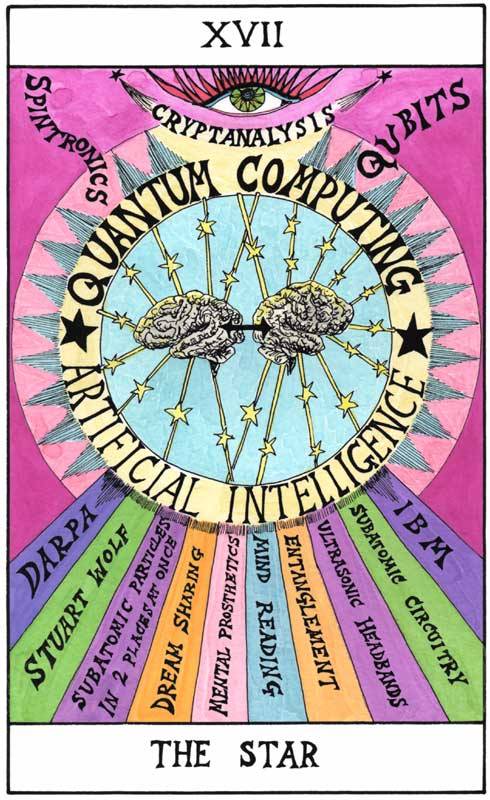
The Star. Art by Suzanne Treister, from HEXEN 2.0.
Quantum Computing - AI
31 notes
·
View notes
Text
How Quantum Computing Will Redefine AI and Machine Learning
Introducing AI, machine learning, and quantum computing into the mix has already begun to transform the face of technology to greater heights. With time, the effects of quantum computing will revolutionize AI and other areas of machine learning beyond our current comprehension. But what is quantum computing, and how will it change the future of artificial intelligence and machine learning?
Let us take you straight into this wonderful crossroads.
Understanding Quantum Computing and AI
Quantum computation is a revolutionary computing system that utilizes the concept of quantum mechanics to solve problems faster than the best traditional methods available to computers. While classical computing uses binary bits, 0 or 1, Quantum computing uses quantum bits or qubits that exist in more than one state. The capacity of quantum computers to simultaneously consider numerous calculations or datasets is called superposition and it is pivotal for all modern AI and machine learning algorithms.
At Guruface, our mission is to make advanced learning accessible to all, including the latest breakthroughs in technology like quantum AI. By exploring courses on quantum computing and AI, you can gain insights into how these technologies are shaping the future.
How Quantum Computing Impacts Machine Learning
One of AI’s categories is machine learning, which involves training a program to identify patterns and algorithms to make accurate predictions using data input. In contrast, current common machine learning model paradigms require intense computation for processing big data, especially with higher dimensionality. That is where quantum machine learning comes into the picture.
Key Benefits of Quantum Computing in Machine Learning
Accelerated Data Processing
With quantum computing, one can solve problems at a speed that would be impossible for any classical computer. This acceleration is significant when it comes to applications that need real-time analysis, be it an autonomous car, or a medical decision-supporting system, where AI and machine learning models can adapt to new information.
Enhanced Pattern Recognition
Quantum algorithms are built to look for a pattern in a set of data, which is critical to AI and machine learning algorithms such as image or voice recognition and recommendation.
Optimization and Problem Solving
Business optimization problems are well-solved by quantum computers and any problem that AI models would solve better with optimized solution—logistics, finance, prediction and analysis—are good candidates for quantum computing.
Deep Learning Advancements
Taking the Deep learning to the next level, quantum computing might help machine learning immensely. Quantum networks when evolving will allow the training of highly sophisticated models which require considerably lower computational power than at present.
Applications of Quantum Computing in AI and Machine Learning
Drug Discovery and Healthcare
The adoption of quantum computing is seen as having the ability to transform drug discovery through simulation of quantum structures. The quantum simulations of these compounds can be analyzed further by AI and machine learning algorithms to reveal new drug compounds faster and faster, bringing new treatments to the market.
Financial Modeling and Risk Analysis
In finance, quantum AI may help to make a significantly better prediction of risks. It enhances the brevity of performing historical computations and market trends with high efficiency in optimizing machine learning with intelligent computing in stock movements and risks.
Climate Modeling and Environmental Science
In finance, quantum AI may help to make a significantly better prediction of risks. It enhances the brevity of performing historical computations and market trends with high efficiency in optimizing machine learning with intelligent computing in stock movements and risks.
The Future of AI and Quantum Technology
AI technology depends on quantum computing as its next major frontier. With prosaic quantum-inspired algorithms, AI models will also adopt quantum enhanced algorithms for faster and improved analysis of big data opening new frontiers. At Guruface, we know the significance of updating ourselves with the latest trends in technology, such as quantum AI and machine learning. Through studying with us you will be prepared for changes in this fast-growing area by developing the knowledge and skills for it.
Why Now is the Time to Learn Machine Learning and Quantum Computing
Enterprises are rapidly finding a need for skills in artificial intelligence and machine learning due to massive enhancements in quantum computing. As for narrowing down the machine learning algorithms, developing new applications in AI and quantum technologies, the opportunity is limitless.
It is useful to learn Machine Learning and quantum computing whether you want to become a data scientist or you are already working as an AI developer. We have a selection of online courses on Guruface to help you get a better understanding of the jobs within the quantum technology and AI market guidance as well as the necessary skills to succeed in this industry of the future.
Conclusion
The combination of quantum computing and of artificial Intelligence will revolutionize industries and generate new business models. The technology in the field of quantum is advancing and that is good news for AI and machine learning because their advancement will increase their value. Get yourself in Guruface to read more on how quantum computing is going to revolutionize the advances in artificial intelligence.
0 notes
Text



黒影 (Kurokage)
"In the depths of silence, we find the power to reshape the world. We are KuroKage. We will prevail."
#kurokage#ai art is stolen art#i stole this#ILoveKuroKage ♥️#kate bush#dystopian#tech#futurism#occult#quantum computing#bushido#pop icon#counterculture#counterpropaganda#Spotify
5 notes
·
View notes
Text
#1. Global Politics#“2024 US Election”#“Russia Ukraine conflict”#“China Taiwan tensions”#“Israel Palestine ceasefire”#“NATO expansion”#2. Technology & Innovation#“AI advancements”#“Quantum computing breakthroughs”#“ChatGPT updates”#“5G technology”#“Electric vehicles news”#3. Climate & Environment#“Climate change summit”#“Carbon capture technology”#“Wildfires 2024”#“Renewable energy news”#“Green energy investments”#4. Business & Economy#“Stock market news”#“Global inflation rates”#“Cryptocurrency market trends”#“Tech IPOs 2024”#“Supply chain disruptions”#5. Health & Wellness#“COVID-19 variants”#“Mental health awareness”#“Vaccine development”#“Obesity treatment breakthroughs”#“Telemedicine growth”
3 notes
·
View notes
Text

(Illustration: Nicholas Law)

(Illustration: Nicholas Law)

(Illustration: Nicholas Law)

The Quantum Apocalypse Is Coming. Be Very Afraid
What happens when quantum computers can finally crack encryption and break into the world’s best-kept secrets? It’s called Q-Day — the worst holiday maybe ever.
ONE DAY SOON, at a research lab near Santa Barbara or Seattle or a secret facility in the Chinese mountains, it will begin: the sudden unlocking of the world’s secrets. Your secrets.
Cybersecurity analysts call this Q-Day — the day someone builds a quantum computer that can crack the most widely used forms of encryption. These math problems have kept humanity’s intimate data safe for decades, but on Q-Day, everything could become vulnerable, for everyone: emails, text messages, anonymous posts, location histories, bitcoin wallets, police reports, hospital records, power stations, the entire global financial system.
By Amit Katwala
WIRED magazine May/June 2025 - Level Up
The Frontiers of Computing Issue
Shared from Apple News - March 24, 2025

Post-quantum algorithms. thermodynamic hardware, open source architectures. apocalypse-proof programming, and more: WIRED journeys to the freaky frontiers of modern computing.
WIRED The Frontiers of Computing Issue
• The Quantum Apocalypse Is Coming. Be Very Afraid
• Hot New Thermodynamic Chips Could Trump Classical Computers
• The Weight of the Internet Will Shock You
• How Software Engineers Actually Use AI
• Quantum Computing Is Dead. Long Live Quantum Computing!
•
#Computers#Quantum computing#AI wars#State & corporate tech race#Cybersecurity#Wired#Condé Nast#Apple News
1 note
·
View note
Text

The Topological Advantage: How Anyons Are Changing Quantum Computing
The field of quantum computing has experienced a significant paradigm shift in recent years, with the emergence of topological quantum computing as a promising approach to building practical quantum computers. At the heart of this new paradigm is the concept of anyons, quasiparticles that exhibit non-Abelian statistics in two-dimensional spaces. First proposed by physicist Frank Wilczek in 1982, anyons have been extensively studied and experimentally confirmed in various systems.
The discovery of anyons and their unique properties has opened up new avenues for quantum computing, enabling the development of fault-tolerant quantum gates and scalable quantum systems. The topological properties of anyons make them well-suited for creating stable qubits, the fundamental units of quantum information. The robustness of these qubits stems from their topological characteristics, which are less susceptible to errors caused by environmental disturbances.
One of the most significant advantages of topological quantum computing is its inherent error resistance. The robust nature of anyonic systems minimizes sensitivity to local perturbations, reducing the need for complex error correction codes and facilitating scalability. Michael Freedman and colleagues first demonstrated this concept in 2003, and it has since been extensively studied.
The manipulation of anyons through braiding, where anyons are moved around each other in specific patterns, implements quantum gates that are inherently fault-tolerant. This concept was first introduced by Alexei Kitaev in 1997, and has since been extensively studied. The topological nature of braiding ensures that operations are resistant to errors, as they rely only on the topology of the braiding path, not its precise details.
Topological quantum computing has far-reaching potential applications, with significant implications for cryptography, material science, and quantum simulations. Topological quantum computing enables enhanced security protocols, insights into novel states of matter, and more efficient simulations of complex quantum systems.
Prof. Steve Simon: Topological Quantum Computing (University of Waterloo, June 2012)
Part 1
youtube
Part 2
youtube
Tuesday, October 8, 2024
#topological quantum computing#anyons#quantum computing#quantum technology#quantum mechanics#quantum physics#quantum simulations#material science#cryptography#lecture#ai assisted writing#Youtube#machine art
5 notes
·
View notes
Text

4 notes
·
View notes
